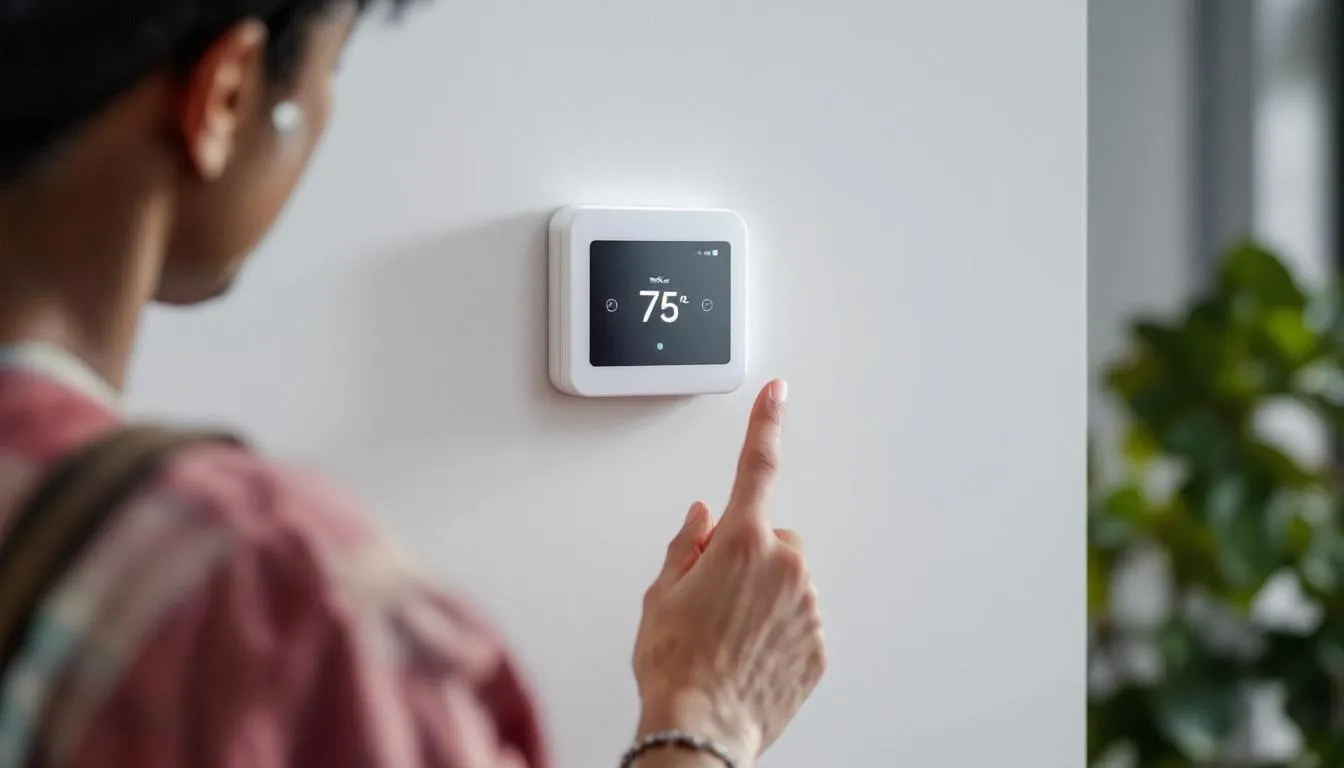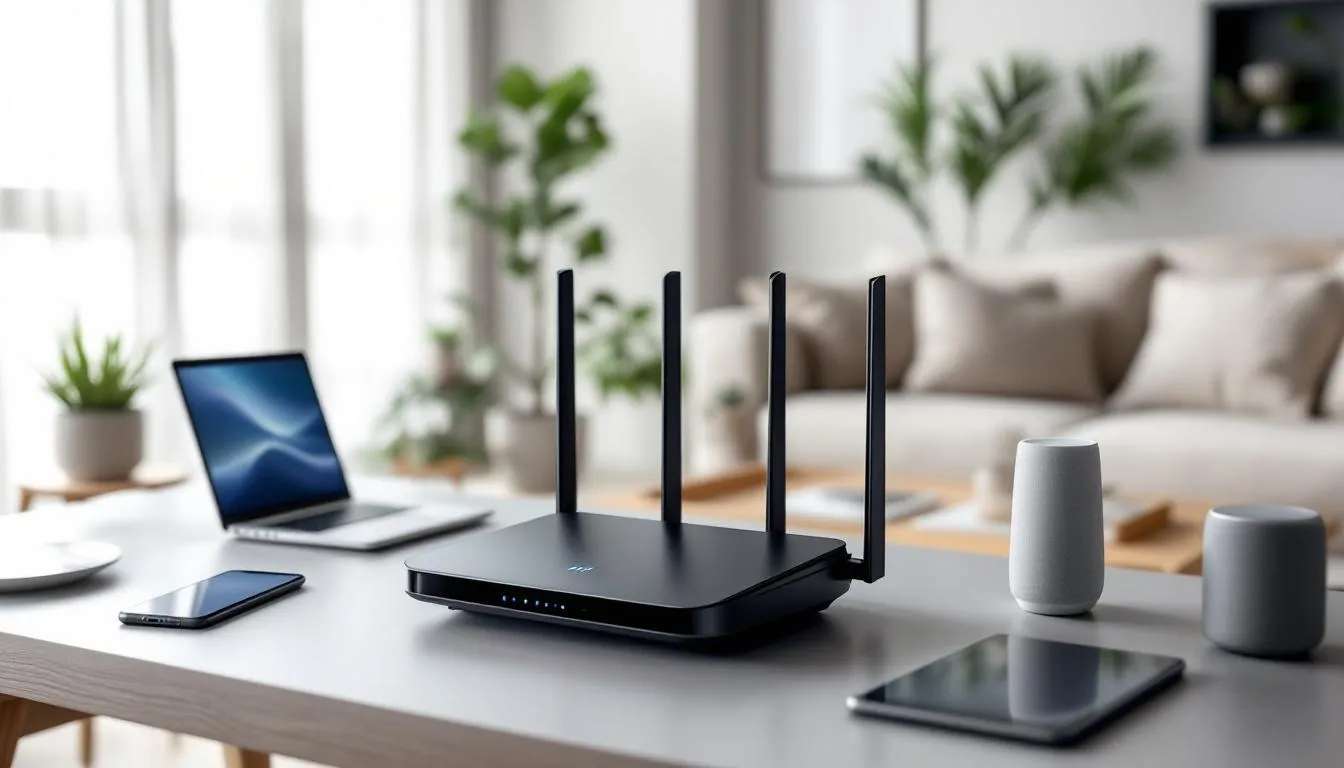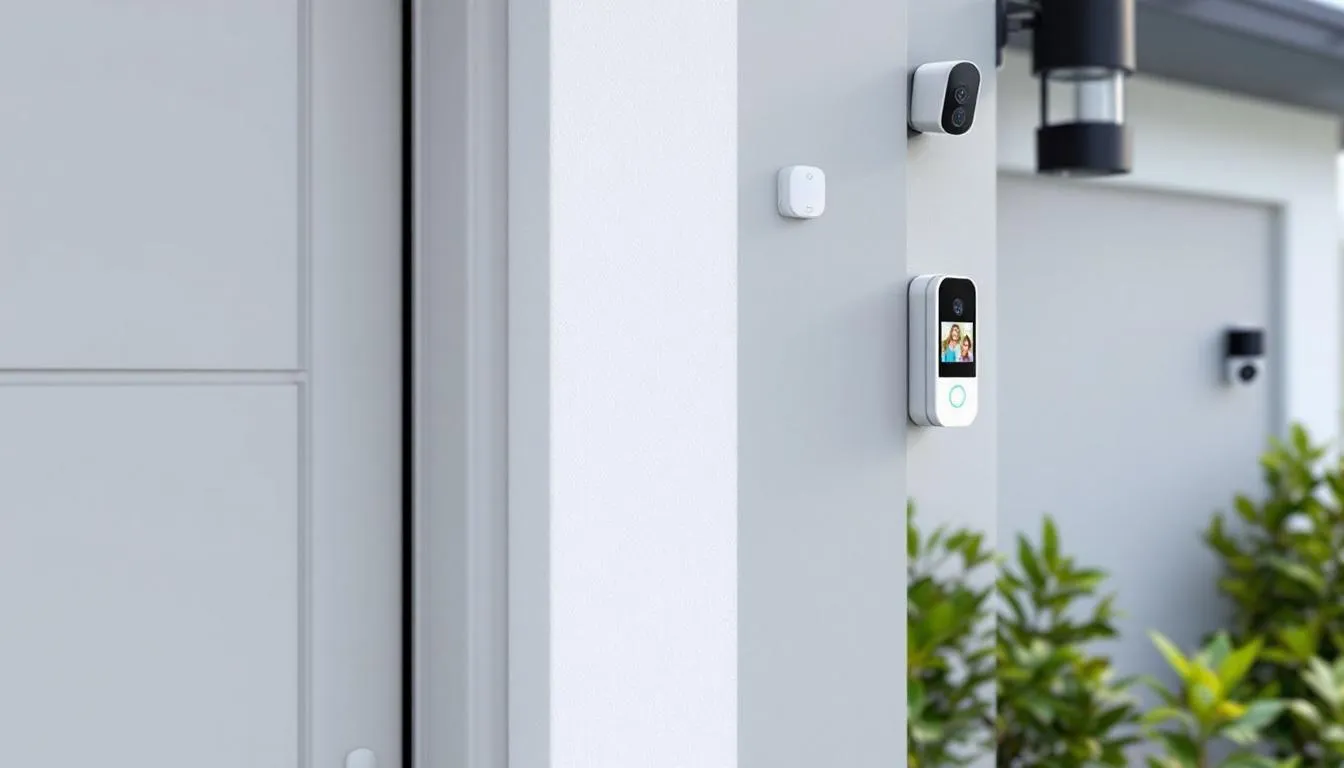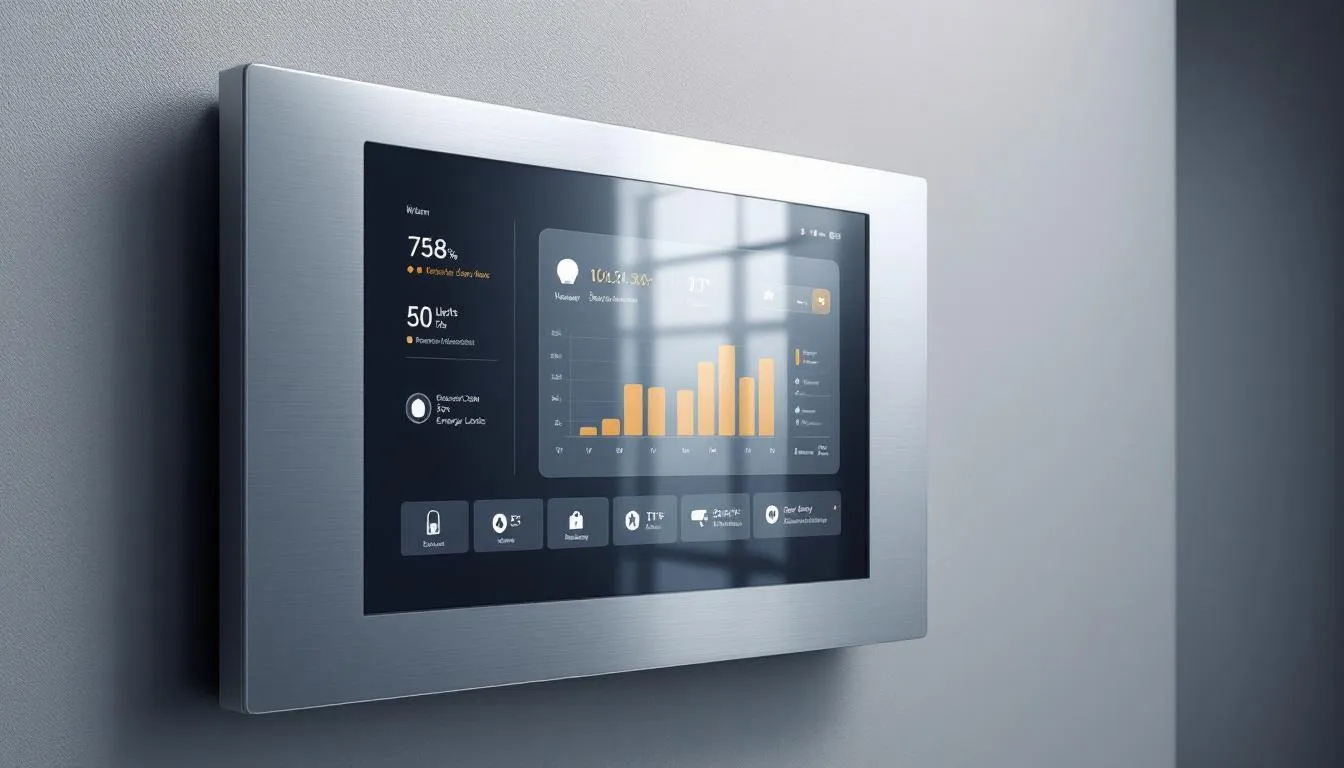Modern homeowners no longer view smart technology as a luxury—it’s become an expected standard in contemporary remodeling projects. When planning your next renovation, incorporating smart home technology can deliver substantial returns through energy savings, enhanced security, and increased property values. Smart homes equipped with integrated systems can reduce energy consumption by 15-30% while commanding resale premiums of 3-5% over comparable non-automated properties.
Successfully integrating smart home upgrades in your remodel plan requires careful planning, proper infrastructure preparation, and strategic device selection. This comprehensive guide will walk you through essential smart features, planning considerations, and implementation strategies to create a future-ready home that enhances your everyday life while protecting your investment.
Smart thermostats represent one of the most impactful smart home features you can install during a renovation. Modern smart thermostat models like the Nest Learning Thermostat 4th Generation and Ecobee SmartThermostat use predictive algorithms and occupancy sensors to optimize heating and cooling schedules automatically.
These energy efficient thermostats can reduce your utility bills by 10-23% through intelligent temperature management and adaptive scheduling. The devices learn your preferences over time, creating personalized climate control that adjusts based on occupancy patterns and weather forecasts. Many utility companies offer rebates that can offset installation costs by up to 30%, making smart thermostats a financially smart upgrade.

Smart lighting systems transform how you interact with your living space while delivering significant energy savings. Philips Hue smart bulbs and Lutron Caseta wireless switches provide voice commands control, remote scheduling, and customizable scene settings that adapt to your daily routines.
Adding smart lighting to your remodel plan enables automated lighting that adjusts intensity based on natural daylight and room occupancy. These lighting systems typically yield electricity savings of 20-25% through more efficient LED usage and reduced energy waste. Integration with voice assistants like Amazon Alexa, Google Home, and Apple HomeKit allows seamless control through simple voice commands.
Smart security systems have evolved into essential home upgrades that enhance security while providing peace of mind. Video doorbells like the Ring Video Doorbell Pro 2 offer high-definition video streaming and motion-activated alerts, while smart locks such as the August Smart Lock Pro enable remote access control and guest management.
Modern security cameras with night vision capabilities and motion sensors provide real-time monitoring that can be controlled remotely through smartphone apps. These smart security features often include professional monitoring options and integrate with automated lighting systems to create comprehensive protection. Homes with integrated smart security systems typically see property value increases of 3-5%.
The kitchen serves as a focal point for smart home integration, with smart ovens and connected refrigerators revolutionizing food preparation and storage. Samsung Family Hub refrigerators feature touchscreens and voice assistants that track expiration dates, suggest recipes, and automate grocery lists. LG ThinQ smart ovens offer programmable cooking modes accessible through mobile devices, enabling precise temperature control and remote monitoring.
These smart appliances streamline daily routines while reducing energy waste through optimized operating cycles and smart diagnostics that prevent efficiency losses. Integration with other smart devices creates a cohesive kitchen ecosystem that responds to voice commands and learns from your cooking patterns.
Smart bathroom fixtures add both convenience and efficiency to your remodel. The Kohler Verdera Voice Lighted Mirror responds to voice commands while providing optimal lighting for grooming tasks. Moen U smart shower systems allow personalized temperature settings and water flow controls that can be programmed for different family members.
These smart features minimize water waste through precise temperature control and automatic shut-off functions. Smart mirrors can display weather information, news updates, and calendar appointments, transforming morning routines into efficient, connected experiences.
Successful smart home integration begins with evaluating your current infrastructure. Your wi fi network must support multiple smart devices operating simultaneously without performance degradation. Mesh systems like Eero Pro 6E or Netgear Orbi provide whole-home coverage that eliminates dead zones and ensures reliable connectivity for all your devices.
Electrical capacity assessment is crucial, as modern technology demands may exceed older panel capabilities. Smart appliances, induction cooktops, and EV charging stations require dedicated circuits and sufficient amperage. During the electrical planning phase, coordinate with contractors to install smart-ready outlets with neutral wires and deep boxes that accommodate smart switches and automation features.
Budget allocation for smart upgrades typically ranges from $2,000 for basic packages to $15,000+ for comprehensive whole-home systems. Proper planning allows you to prioritize smart home features based on your lifestyle needs—whether focusing on energy efficiency, security, entertainment, or convenience.
The most cost-effective approach involves integrating smart technology during the electrical and drywall phases of your remodel. This timing allows for hidden wiring installation, conduit placement, and central location setup for smart home systems without costly retrofitting later.
Choosing compatible smart home platforms ensures seamless integration across all your devices. Apple HomeKit provides excellent integration for iPhone and iPad users, offering enhanced privacy controls and Siri voice control. Amazon Alexa supports over 100,000 smart home devices and provides robust voice automation capabilities across multiple brands.
Google Home optimizes performance for Android users and leverages advanced natural language processing for intuitive voice commands. Samsung SmartThings offers a hub-and-spoke model that bridges devices across different manufacturers, supporting Z-Wave, Zigbee, and Wi-Fi protocols for maximum flexibility in device selection.
A robust internet connection forms the foundation of any smart home system. Structured wiring installation during renovation should include Cat 6 ethernet cables to high-bandwidth locations like entertainment centers and security camera positions. This prevents wireless bottlenecks that can affect performance of security cameras and streaming services.
Central hub placement in an accessible location optimizes signal distribution and simplifies maintenance. Network closets should accommodate growing numbers of connected devices while providing easy access for troubleshooting and system updates.

Integrating smart systems often requires electrical panel upgrades to handle increased loads from smart appliances and charging stations. Dedicating circuits to major smart loads prevents overloading and ensures code compliance. Smart switches require neutral wires, so coordination with electricians during the planning phase prevents costly modifications later.
Pre-wiring considerations include installing wall conduits for future device additions, planning mounting points for security cameras and smart speakers, and coordinating low-voltage wiring for sensors and automation devices. These preparations enable future smart home expansion without opening walls or disrupting finished surfaces.
Professional installation ensures proper integration of all smart devices while maintaining warranty coverage and code compliance. Certified installers provide system documentation, user training, and ongoing support that maximizes your smart home investment. They also coordinate with other contractors to ensure optimal placement and wiring during construction phases.
Smart HVAC systems with zoned climate control can reduce energy consumption by 15-30% compared to traditional systems. These systems work by restricting heating and cooling to occupied zones while adjusting automatically based on weather conditions and occupancy patterns.
Automated window treatments like Lutron Serena smart shades complement HVAC efficiency by reducing solar gain in summer and retaining heat in winter. These motorized shades respond to temperature sensors and time schedules, further moderating HVAC runtime and improving energy efficiency.
Smart water heaters such as Rheem EcoNet models allow homeowners to schedule heating cycles based on usage patterns and off-peak utility rates. These systems avoid standby losses through vacation modes and occupancy-based scheduling, delivering both convenience and energy savings.
Energy monitoring systems like Sense Home Energy Monitor provide real-time data about appliance energy usage, helping identify inefficiencies and optimize consumption patterns. This granular usage data enables informed decisions about when and how to operate energy-intensive devices.
Many regions offer substantial rebates for energy-efficient smart devices. California utilities, for example, provide incentives that can offset device costs by 15-30%, significantly improving return on investment. Time-of-use electricity rates make smart scheduling even more valuable, as devices can automatically operate during lower-cost periods.
Professional security systems like ADT Command and Vivint Smart Home integrate 24/7 monitoring with smartphone control and home automation. These platforms combine door and window sensors, motion detectors, security cameras, and environmental sensors into unified dashboards that provide immediate alerts and emergency response coordination.
Smart smoke and carbon monoxide detectors such as Nest Protect send smartphone notifications during emergencies while providing advanced diagnostics and battery monitoring. Integration with other smart devices enables automated responses like emergency lighting activation and HVAC system shutdown during fire detection.

Smart garage door openers like Chamberlain MyQ provide remote access control, guest permissions, and activity logging that enhances both security and convenience. These systems integrate with smart security systems to provide comprehensive property monitoring and automated delivery management.
Outdoor security cameras with night vision and AI-based motion detection provide perimeter protection while integrating with automated lighting for enhanced deterrence. Cloud storage and mobile alerts ensure continuous monitoring even when away from home.
Sonos and Bose whole-home audio systems deliver synchronized, high-quality sound throughout multiple zones, controllable via voice commands or smartphone apps. These entertainment systems integrate with smart tvs and streaming services to create seamless media experiences that adapt to different activities and times of day.
Smart TVs with built-in voice control and smart assistant integration eliminate the need for multiple remotes while providing intelligent content recommendations based on viewing habits. Integration with automated lighting and climate control creates optimal viewing environments automatically.
Smart pools with automated chemical regulation and robotic cleaning systems extend smart home automation to outdoor spaces. Landscape lighting schedules and app-controlled water features integrate seamlessly with indoor automation for comprehensive property management.
These outdoor smart features often include weather integration that adjusts pool heating, lighting schedules, and irrigation systems based on forecasted conditions, optimizing both convenience and resource consumption.
Ensuring future compatibility requires selecting systems that support open standards like Zigbee, Z-Wave, and the emerging Matter protocol. These standards enable device additions from multiple manufacturers without platform lock-in, protecting your investment as technology evolves.
Regular firmware updates and security patches maintain optimal performance while protecting against cyber threats. Professional installation documentation and system mapping facilitate future upgrades and troubleshooting, ensuring your smart home systems remain functional and secure over time.
Ongoing maintenance includes regular software updates, battery replacements for wireless devices, and periodic system testing to ensure all smart devices function correctly. Professional support contracts provide peace of mind through regular check-ups and immediate technical assistance when issues arise.
Documentation of all device locations, configurations, and access credentials is essential for system management and future modifications. This information proves invaluable during troubleshooting, system upgrades, or property sales.

For comprehensive smart home integration, consider a phased approach that prioritizes essential systems first. Start with smart thermostats and lighting during the electrical phase, add security systems during finish work, and complete entertainment systems after move-in.
This approach spreads costs over time while ensuring each system is properly integrated and tested before adding complexity. It also allows you to learn each system’s operation before introducing additional smart technology.
Coordinate smart home installation with other contractors to ensure optimal placement and avoid conflicts. Electricians need to understand smart switch requirements, HVAC contractors should coordinate with smart thermostat installation, and security installers need access during appropriate construction phases.
Clear communication between all trades ensures proper infrastructure preparation and prevents costly modifications or reinstallation later in the project.
Incorporating smart home upgrades in your remodel plan transforms your renovation from a simple update into a future-ready investment. From energy-saving smart thermostats that reduce utility bills by up to 23% to comprehensive security systems that enhance safety and property values, smart technology delivers measurable benefits that justify the initial investment.
The key to success lies in early planning, proper infrastructure preparation, and selecting compatible systems that can grow with your needs. By integrating smart features during your remodel’s electrical and structural phases, you avoid costly retrofitting while ensuring optimal performance and seamless operation.
Modern living demands the convenience, efficiency, and security that only smart home technology can provide. Start planning your smart home integration today to maximize both immediate benefits and long-term value, creating a home that anticipates your needs and adapts to your lifestyle for years to come.
Ready to elevate your home with smart upgrades? Contact Ace Home Remodeling now for a free estimate and expert guidance tailored to your remodel goals. Let us help you create a connected, efficient, and future-ready living space that fits your lifestyle and budget.

Contact us today for a free consultation and estimate